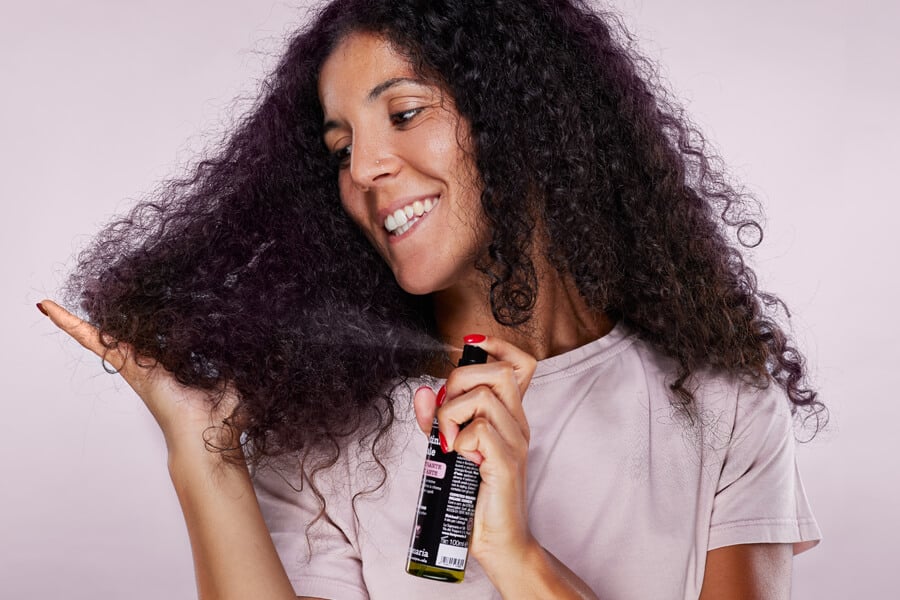The insights of La Saponaria
Sun creams: what is the difference between chemical and physical sun filters?
Sunscreen products are the summer cosmetics par excellence and are a must for every home in the summer season - and especially for every beach bag. Along with responsible exposure to the sun, sunscreen helps us to protect our skin from the ultraviolet radiation emitted by the sun.
What is sun protection?
Technically, a sunscreen product is defined as "any preparation, cream, oil, gel, or spray, intended to be placed in contact with human skin for the exclusive or main purpose of protecting it from UV radiation by absorbing or scattering it, or by refraction."
As is also evident from the EU definition, not all sunscreen products are the same: they may differ in many ways, but the most substantial difference is how they act, i.e. whether they protect the skin by 'absorption' and 'scattering' or by 'refraction': in other words, whether they act using chemical or physical filters.
How to choose sunscreen?
1. What are UV rays?
2. What is the difference between chemical and physical sun filters?
3. Which chemical filters are most commonly used?
4. What are booster ingredients and why do they improve the effectiveness of a sunscreen?
5. Which sunscreen to choose?
1. What are UV rays?
We have already talked about the various types of UV radiation to explain the importance of sun protection, but let’s return to the question for a moment. Ultraviolet radiation is the most 'energetic' radiation of the solar spectrum that we come into contact with, so it’s also the most dangerous to our skin. UV rays are divided into UVC, UVB and UVA.
• UVCs have a wavelength ranging from 100 to 280 nm. They are very dangerous, but as they are absorbed by gases in the stratosphere, if the ozone layer is not further altered, they do not reach the earth's surface.
• UVA has a wavelength ranging from 315 to 400 nm. These are very penetrating, and as such are able to reach the dermis and alter the structure of the collagen fibres and elastin, thus causing premature ageing of the skin and increasing the likelihood of the onset of other skin diseases.
• UVB rays, on the other hand, with a wavelength of 280-315 nm, are less penetrating than UVA, and affect the most superficial layer of the skin, the epidermis. They are responsible for sunburn, erythema and other skin diseases.

2. What is the difference between chemical and physical sun filters?
’Sunscreen’ products are the most important weapon to defend skin from the sun. The efficacy and safety of sun protection cosmetics is based on the type and quantity of the UV-antimolecules they contain. But just adding filters to a cream is not enough to make a good sunscreen, and there are many ingredients and formulation and production techniques that contribute to creating an effective, quality sunscreen.
In any case, whatever the formulation and the type of filters used in sunscreens, it’s important to remember one thing: every sunscreen on the market (sold by responsible companies and through official channels!) must comply with precise legal requirements and pass a series of tests that guarantee protection from UVA and UVB rays and are used to determine the SPF declared on the label. The different types of formulation possible (with chemical filters, with physical filters or with associated filters), are therefore not classified according to their efficacy, but based on their mechanism of action and the characteristics of their formulation.
Like all other cosmetic products, sunscreens are governed by the European Cosmetics Regulation 1223/2009. Specifically, Annex VI lists all the UV filters authorised for use in cosmetic products and their maximum usable concentration. Formally, sunscreens are subdivided according to their nature and mechanism of action. But in practice, what are the differences between physical and chemical sunscreens?

3. What are physical sun filters?
Physical filters, also called inorganic filters, have shielding properties. These are substances that, due to their opacity, provide an effective shield against UV radiation. They consist of small mineral particles that reflect the sun's rays, so that they can no longer reach the skin. Unlike chemical sunscreens, they do not retain heat or penetrate the skin. Furthermore, they are not broken down, do not interact and are neither altered nor damaged by solar radiation. They are able to repel both UVA and UVB frequencies.
In practice, they are like mirrors, protecting us from harmful radiation through a reflection/scattering mechanism.
Solar radiation is reflected or scattered and not absorbed by the skin surface, so they do not cause the skin to overheat; on the contrary, they protect it effectively. These are inert, photostable substances that are particularly safe for the health of the skin.
Compared to chemical filters, they have less allergenic power. In most cases, these are natural sun filters, but they can also be synthetic, i.e. produced artificially. The most commonly used physical shielding agents are zinc oxide and titanium dioxide.
Zinc Oxide
It reflects both UVB and UVA rays. It comes in the form of a white powder, and can be found in numerous cosmetics for its antibacterial, soothing and barrier properties. It is very well tolerated by the skin, so much so that its most common and well-known use is in the zinc oxide paste used for nappy changes on small children.
We also find it in many make-up products for its pigmenting power.
The intrinsic characteristics of zinc oxide make it an excellent sunscreen, capable of 'blocking' UV rays and their harmful action.
The use of zinc oxide as a UV filter is permitted in both nano and non-nano form, at a maximum concentration of 25 per cent. Nano zinc oxide, i.e. zinc oxide in the form of nanoparticles, is potentially harmful to marine habitats, particularly coral reefs.
Haereticus Enviromental Laboratory (HEL), a non-profit scientific organisation, seeks to increase the scientific, social and economic knowledge of natural environmental habitats, in order to conserve and restore them. HEL has designed a certification called 'Protect Land + Sea', which certifies several sunscreens as safe, including those containing Zinc Oxide (non-nano).
All La Saponaria sunscreens contain non-nano sun filters, and indeed, the zinc oxide in the formula was subjected to a study that showed that its composition does not endanger coral reefs or the marine ecosystem in general, because the residual concentrations are much lower than those harmful to the aquatic environment.
Hydroxyapatite
In nature, hydroxyapatite is a mineral that occurs in the form of white prismatic crystals. It is one of the main components of bones and teeth, and gives them their characteristic texture and hardness.
In cosmetics, it is used in oral care products, e.g. toothpastes, or in the manufacture of environmentally friendly and skin-compatible sunscreens.
In combination with other ingredients, such as zinc oxide, hydroxyapatite performs an important barrier action against UV radiation, preventing the dreaded sunburn.
Safe for both the skin and the environment, hydroxyapatite is a photocatalytic ingredient, meaning it does not generate free radicals when illuminated, so it is excellent for protecting the skin from photo-ageing.
Finally, when applied to the skin, it has a pleasant smoothing and soft-focus effect.
Pongamia Extract (Pongamia Pinnata Seed Extract)
From the seeds of the Pongamia tree, also known as Millettia pinnata, Pongamia oil is extracted. It is known for its protective action against UV rays and is thus particularly useful for the formulation of sunscreens.
Rich in flavonoids, antioxidants and fatty acids, Pongamia oil is the ideal ally for protecting the skin from the sun, preventing skin ageing and performing a soothing action. Its softening properties leave the skin moisturised, supple and soft. It also helps to naturally restore balance to the hydrolipid barrier.
Pongamia oil can also be used to protect the hair from UV damage and keep it hydrated and shiny.
![Filtri fisici - ENG[116]-png](https://blog.lasaponaria.it/hs-fs/hubfs/Filtri%20fisici%20-%20ENG%5B116%5D-png.png?width=530&height=333&name=Filtri%20fisici%20-%20ENG%5B116%5D-png.png)
![Filtri chimici - ENG[114]-png](https://blog.lasaponaria.it/hs-fs/hubfs/Filtri%20chimici%20-%20ENG%5B114%5D-png.png?width=531&height=334&name=Filtri%20chimici%20-%20ENG%5B114%5D-png.png)
Nano filters: how to tell if a cosmetic contains nanoparticles
Nanomaterials are defined according to the European Commission's Recommendation of 18 October 2011 as 'components with dimensions between 1 and 100 billionths of a metre'.
So, when we talk about nanoparticles, we are talking about extraordinarily small materials obtained in the laboratory, about whose characteristics we still know too little. They represent the latest frontier, an emerging technology, but precisely because of this, we need to delve deeper and avoid adopting a superficial attitude.
In 2004, several research institutes sounded a serious alarm about the possible danger of synthetic nanoparticles to human health. Prior to this, other independent research had reported toxic effects caused by the penetration of these nanoparticles into tissues and organs.
Nanomaterials have different toxicological properties and respond to different laws from the elements they originate from: knowing that titanium is a safe material is not sufficient for us to be certain that a titanium nanoparticle is safe. It has to be assessed on a case-by-case basis, since some studies suggest that these particles, due to their size, are neither metabolised nor excreted by the human body, and can generate accumulations in the various organs, with effects that are difficult to predict.
This is why it is wise to proceed with caution.
In Europe, the Cosmetics Regulation clearly regulates the use of nanomaterials in cosmetics, the aim being to ensure a high level of consumer and human health protection. Cosmetic manufacturers and distributors must inform the European Commission six months before marketing a cosmetic containing nanomaterials. Cosmetic manufacturers who decide to include them in their formulas must include them in the cosmetic safety assessment (on the PIF) and report their presence on the European Cosmetic Products Notification Portal (CPNP).
In order to make the presence or absence of nano-particles evident to consumers, the regulation makes it mandatory to indicate the presence of nanomaterials on the label in the list of ingredients: the name of the substance must be followed by the word 'nano' in brackets. Where NANO is not indicated, this means that filters larger than 100 billionths of a metre have been chosen.
Pending future and more extensive evidence on whether or not this new technology is dangerous, it is preferable to use other protection systems that remain valid and have no negative effects, such as microencapsulated filters, which are also able to guarantee a certain smoothness on the skin.
What are chemical sun filters?
Chemical or organic filters are synthetic substances that capture the energy of UV radiation to prevent it from reaching and damaging the cells of the epidermis and dermis. They selectively absorb UVA and UVB radiation, acting at different wavelengths. Some absorb only short UVA rays, others only UVB rays, and others still both long and short UVA rays.
These molecules, once absorbed, break down the sun's radiation, retain the energy and then release it in the form of heat and/or fluorescence. This effectively increases the sensation of heat felt on the skin. In a nutshell, chemical filters absorb part of the sun's radiation and release the energy in the form of heat.
The energy they absorb leads to the formation of excited compounds that release energy slowly in the form of fluorescence or heat, returning to their initial structure and changing their absorption wavelength. This is why the ideal sunscreen product must not only be broad-spectrum, but also have photostable filters, i.e. filters resistant to the action of the sun.
Chemical sunscreens have the advantage of being cheaper and easier to process, and enable the production of cosmetics that are more comfortable for the user, lighter and easier to spread. The main limitation of these chemical filters is precisely that they can give rise to irritation, phototoxicity and sensitisation, as they absorb the sun's energy and can trigger photochemical reactions, and in some cases a reduction in effectiveness.
Chemical sunscreens are certainly critical ingredients, and are the subject of in-depth study by the competent authorities, because they seem to be associated with endocrine or biochemical damage.
For example, the PABA filter, which for a long time was one of the most widely used chemical filters, has been banned since 2009, precisely because it has been found to be carcinogenic and highly sensitising.
Other widely used filters include Benzophenone, which has been established as an endocrine disruptor , and Octinoxate, an ingredient that has even been found in breast milk, with serious effects on human health and the environment.
Chemical filters are heavily polluting for fish, molluscs, algae and corals, as they can cause genetic alterations by modifying neurological and reproductive behaviour in different species.
The latest studies on chemical filters
One recent American study (2019) reported the risk that substances contained in chemical filters could be absorbed by the skin and enter the bloodstream.
3. What are the most commonly used chemical filters?
Great care must be taken when choosing the right sunscreen. Various scientific studies have shown that there are numerous brands of sunscreen on the market containing ingredients harmful to the skin, and just as many ingredients that are polluting, and their presence is capable of undermining the balance of beaches and seas.
Buying the right sunscreen is therefore a gesture of responsibility towards ourselves and our planet.
Octinoxate
Also called Octyl methoxycinnamate (OMC), it is a UV filter. It is photostable only when used alone or in combination with Octocrylene and Drometrizole Trisiloxane. It is readily absorbed through the skin and has been detected in human urine, blood and breast milk, indicating that humans are routinely exposed to this compound, and its bioaccumulation is easily observed. It is an endocrine disruptor that mimics oestrogen and can interfere with thyroid function. Several studies show a significant negative destructive effect on marine flora and fauna.
Octocrylene
Octocrylene protects mainly against UVB and to a reduced extent also against short UVA rays. It is used either alone or in combination with other filters.
On contact with oxygen, it creates reactions that can interfere with cell signalling, cause mutations, lead to cell death, and can be a factor in cardiovascular diseases. It can cause allergies and photosensitisation. It is harmful to the aquatic environment, and several studies have shown that it interferes with animal reproduction.
Drometrizole Trisiloxane
It is a very photostable chemical sun filter that protects against both UVB and short UVA rays. For a broad-spectrum action, it must be combined with other long UVA filters. It appears to be very toxic to the environment and very toxic to the respiratory system.
Benzophenone-3
It belongs to the benzophenone category (it is also known as Oxybenzone). It is a chemical filter able to defend the skin effectively against both UVB and UVA rays. The maximum use concentration is 6%. If a cosmetic contains more than 0.5%, 'Contains Benzophenone-3' must be indicated, because it may not be tolerated by some people.
Laboratory studies have shown that in addition to the fact that this ingredient can disrupt the hormonal system by causing a weakening of oestrogenic activity, it penetrates the skin, promoting an increase in free radicals that damage DNA when exposed to the sun.
Benzophenone-4
It is a chemical filter that effectively covers short UVB and UVA rays. It can cause sensitisation and allergy issues. There is strong evidence that it is an endocrine disruptor.
Ethylhexyldimethyl PABA or PADIMATE
Absorbs UVB radiation. It facilitates the formation of free radicals, and can cause allergic reactions in some people. One of the few PABAs still permitted, it is a close relative of the PABA filter widely used in the past and now banned as a proven carcinogen. Several studies have demonstrated its oestrogenic and radical activity and its interaction with DNA. Highly allergenic.
Salicylates
The most common examples of this class are Ethylhexyl Salicylate and Homosalate. The former is a chemical filter with moderate UVB absorbing power and not very photostable, so it must be combined with other chemical and/or physical filters in formulations. It can be used at a maximum concentration of 5%.
Homosalate is a very effective filter against UVB rays, but does not protect against UVA rays even though it often causes allergies. Suspected of being an environmental toxin and being persistent or bioaccumulative.
PABA
It is a filter that protects us from UVB rays. It can lead to photosensitivity to the point of causing photoallergic dermatitis. It is also responsible for an increase in the amount of free radicals. It is a natural chemical found in folic acid, vitamins and various foods, including wheat, eggs, milk and meat.
It has been banned from use in cosmetics within the EU for a few years now.
Isoamyl p-methoxycinnamate
It has good absorbing power against UVB radiation. It can cause skin irritation and contact allergies.
Diethylamino Hydroxybenzoyl Hexyl Benzoate
It is a broad-spectrum filter capable of protecting the skin against short and long UVA rays but not against UVB rays. For this reason, it must be combined with UVB filters. It is very photostable and compatible with other cosmetic ingredients.

4. What are booster ingredients and why do they improve a sunscreen's performance?
The term BOOSTER in sun protection is used to emphasise a protective capacity of the finished cosmetic that is superior to the capacity of its individual parts.
This is called a synergy effect, where 1+1 = 3.
It is usually due to the action of certain polymers and emollients, which - when included in a cosmetic with a certain mix of sun filters - amplify the SPF, or to the combination of certain soluble and/or insoluble sun filters that give a higher SPF than the individual filters.
However, there are several techniques used to achieve a BOOSTER effect in cosmetic sun protection:
1. Emollients and polymers (silicone elastomers) that offer optimal distribution of the filtering substances. A multilayer filter effect can be achieved using layers of substances with different refractive indexes
2. Coating of filtering substances, particularly metallic substances, reducing their photo-reactivity and photo-catalytic properties.
3. Beads (grains, drops, spheres): combine the advantage of having a non-nano size and enclosing any insoluble nano filters, reducing the risks of photo-reactivity due to the nano size
4. Quenchers: non-filtering substances that break down the different excited states of sun filters. They are indispensable for stabilising the filtering system over time. Suitably formulated, they can amplify SPF and UVA absorption. Benzylidene camphor and cinnamic acid derivatives may be used.
5. Natural substances: in nature, there are also oils and extracts that, although they cannot be considered actual sun filters, when used in a sun cream improve its performance, both in terms of protection and above all by acting as natural antioxidants
These include:
• Vitamin C, which increases UVB protection
• Vitamin E, which increases protection against both UVB and UVA rays, while also slowing down the oxidative processes initiated by the free radicals generated by infra-red radiation following incorrect sun exposure
• Raspberry seed oil, which contains natural UV filters
• Carrot oil, which is rich in β-carotene, and thus stimulates the formation of melanin, the pigment in the skin that protects the epidermis from radiation and stimulates tanning
• Turmeric, which thanks to its antioxidant action, protects cells from free radicals. It contains natural sun filters with medium-low protection (so it is useful for already tanned skin) and accelerates the tanning
• Pomegranate seed oil, which improves elasticity and counteracts skin photo-ageing
• Rice bran oil, which also improves skin elasticity and counteracts photo-ageing

5. Physical and chemical sun filters: which sunscreens to choose
There are several ways to identify a well-formulated sunscreen. The type of filters used is certainly a key aspect, although it is not the only one.
The ideal candidate must:
• offer effective protection from UVA and UVB radiation
• be well tolerated
• be resistant to water and sweat
• be easy to apply and spread
• be photostable and thermostable
• be safe and effective
• not contain allergenic substances
• be rich in antioxidants
• be made only with physical filters
Formulations made with natural ingredients rich in antioxidants and vitamins are preferred, and all formulas containing irritating and potentially allergenic ingredients (such as parabens or various types of chemical filters) should be avoided. The fragrances in some creams could also cause problems in the sun, so sunscreens with very little fragrance, and preferably neutral, are preferred.
The texture of the product is also important: this is a question not only of appearance, but of efficacy. A sunscreen that spreads well and does not leave white marks will be easier to apply, with less risk of leaving some areas of skin unprotected.
Why is it preferable to choose sunscreens containing physical filters?
Regarding the type of filters to be preferred, we’ve opted for physical filters.
The disadvantage is that these filters are more difficult to use in recipes, and make the formulator's job harder when it comes to creating a product with a pleasant texture. However, research today has brought very satisfactory results, a far cry from the first 'ghost effect' sunscreens with physical filters. Today we can formulate creams with physical filters that are very fluid and comfortable on the skin, although we still cannot match formulations with chemical filters in this respect.
Compared to the latter, however, physical filters have several advantages: they have a lighter environmental impact, are more photostable and certainly have a better toxicological profile.
The use of physical filters, as opposed to chemical filters, minimises the risk of allergies and skin sensitisation, making them particularly suitable for sensitive individuals and individuals likely to be intolerant to chemical filters. Some chemical filters, as we have seen, can also be endocrine disruptors, and their use is not recommended for pregnant women, children and adolescents in particular.
So, to sum up, here is why we’ve opted for physical filters:
Safer toxicological profile
• They do not interact with the skin and are potentially less allergenic;
• Risk of sensitisation: individual skin sensitisation significantly reduced;
• Highly compatible with children’s delicate skin.
Environmental Sustainability
• Eco-sustainable, in line with what we believe in!
• They do not have the devastating effects on aquatic flora and fauna of chemical filters

Ban on sun creams with chemical filters in Palau
The year 2020 started with good news for the barrier reef! The Palau archipelago, made up of beautiful, unspoilt islets between the Philippines and Papua New Guinea, has decided to ban sunscreens containing 10 super-polluting chemical agents for the seas and harmful to coral reefs.
"We have to live with respect for the environment, because this is the cradle of our very existence: we would not survive otherwise," said the president of the small state, Tommy Remengesau . The archipelago has about 340 islands with just over 450 square kilometres of land area for fewer than 20,000 inhabitants, but ten times that number of tourists per year: hence the environmental emergency.
Located in the middle of the Pacific, the archipelago is universally recognised for the richness of its marine ecosystem, peculiarities that make it one of the most popular destinations for lovers of underwater tourism. The ban was decided in November 2019 and implemented in record time.
This is the first state in the world to do so, but it will soon be followed by Hawaii and the Caribbean island of Bonaire. All the more reason to choose physical filters, and to bathe consciously and with respect for all creatures living in the sea, even the most delicate ones such as corals.

Written by Simona
She is La Saponaria’s digital writer: always juggling a newsletter to send and a blog article to publish, she lovingly takes care of our social media channels and our e-commerce.

































